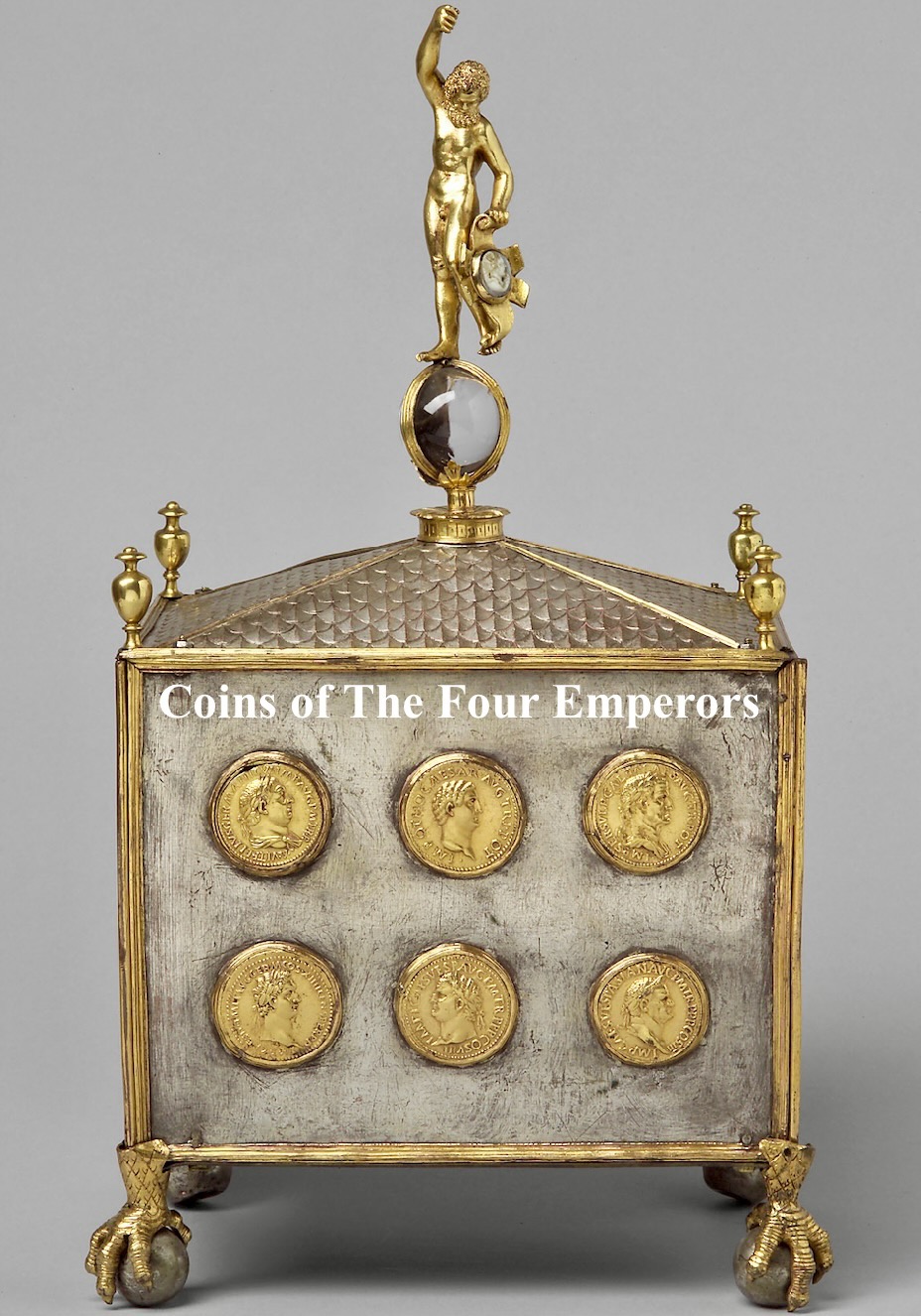
Year Of The Four Emperors
Nero, The last of the Julio-Claudian emperors was named at the age of seventeen, in 54 CE. His first few years as emperor were quite peaceful, as the prominent philosopher Seneca and commander of the Guard Burrus were in charge of the emperor’s duties (Tuck 2021, 177). Nevertheless, the fall of Seneca and Burrus, terrible events such as the great fire of Rome in 64 CE, and Nero’s actions throughout the 60s CE brought chaos to the empire. Nero was declared an enemy of the state and committed suicide in June of 68 CE (Morgan 2007, 29-30). Ushering in the first civil war to take place under the Roman Empire. During this 18th month period, four different men took the title of emperor (Morgan 2007,1). Starting with Galba, the governor of Nearer Spain who had been openly “campaigning” against Nero since March. With the support of the imperial Praetorian Guard, one of the keys to power during this civil war, he was able to rule for about eight months (Tuck 2021, 198). However, when the governor of Western Spain, Otho, learned Galba did not choose him as his successor Galba's reign was in danger (Tuck 2021, 198). Otho secretly plotted against Galba with the Praetorian guard, he had him killed and Galba's decapitated head brought to his camp (Morgan 2007, 70-71). Otho ruled for a brief three months, before committing suicide to stop the ongoing wars with his rival Vitellius. At this point Vitellius, the former governor of Lower Germany, had defeated Otho's army in battle. Vitellius was granted the title of emperor once he reached the city of Rome in June after Otho’s death. Vitellius replaced the Praetorian Guard with his own army, and ruled for eight months (Tuck 2021, 198). In the final month of 69 CE, Vespasian who had slowly gained support over the past few months from different eastern governors, had members of his army stab Vitellius to death (Tuck 2021, 198). This chaotic and bloody year in the beginning of the Roman Empire was coined as "the year of the four emperors."
Overview Of Coinage Before and During 69 CE:
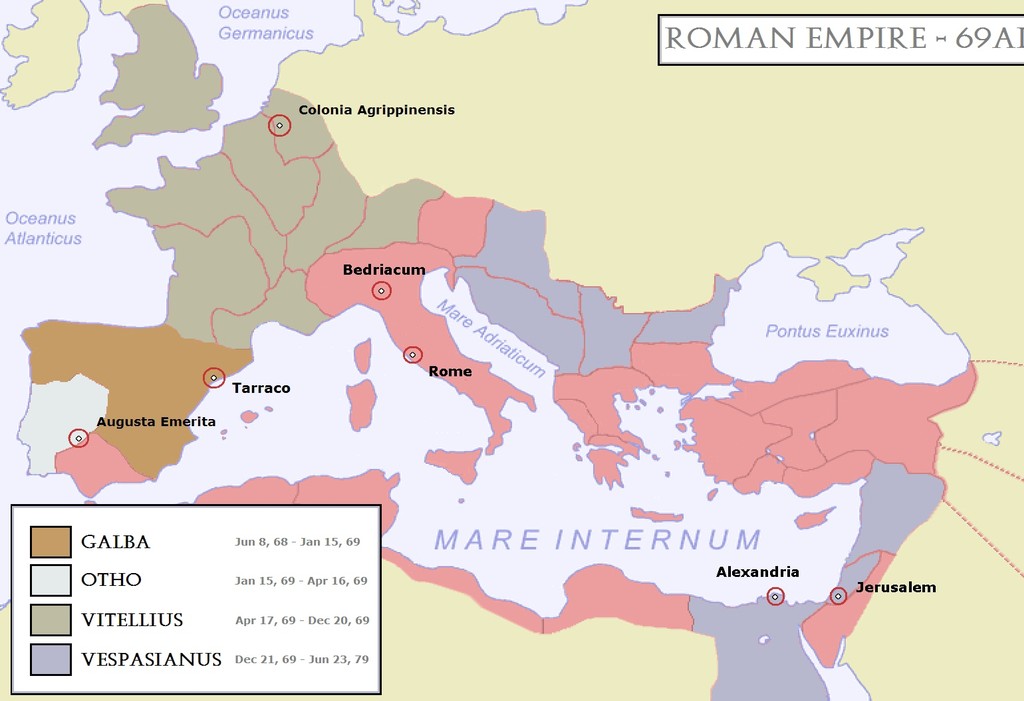
1. Year of the Four Emperors Map
This map is color coded to the imperial province each emperor had support from. Galba, Otho, and Vitellius had strongholds in areas they governed for years prior to civil war. For Vespasian, his acts as a military general in the eastern empire gained him favor. This map provides a visual example of the unstableness of the empire, and how many senatorial provinces colored in red were being pulled between different powers.
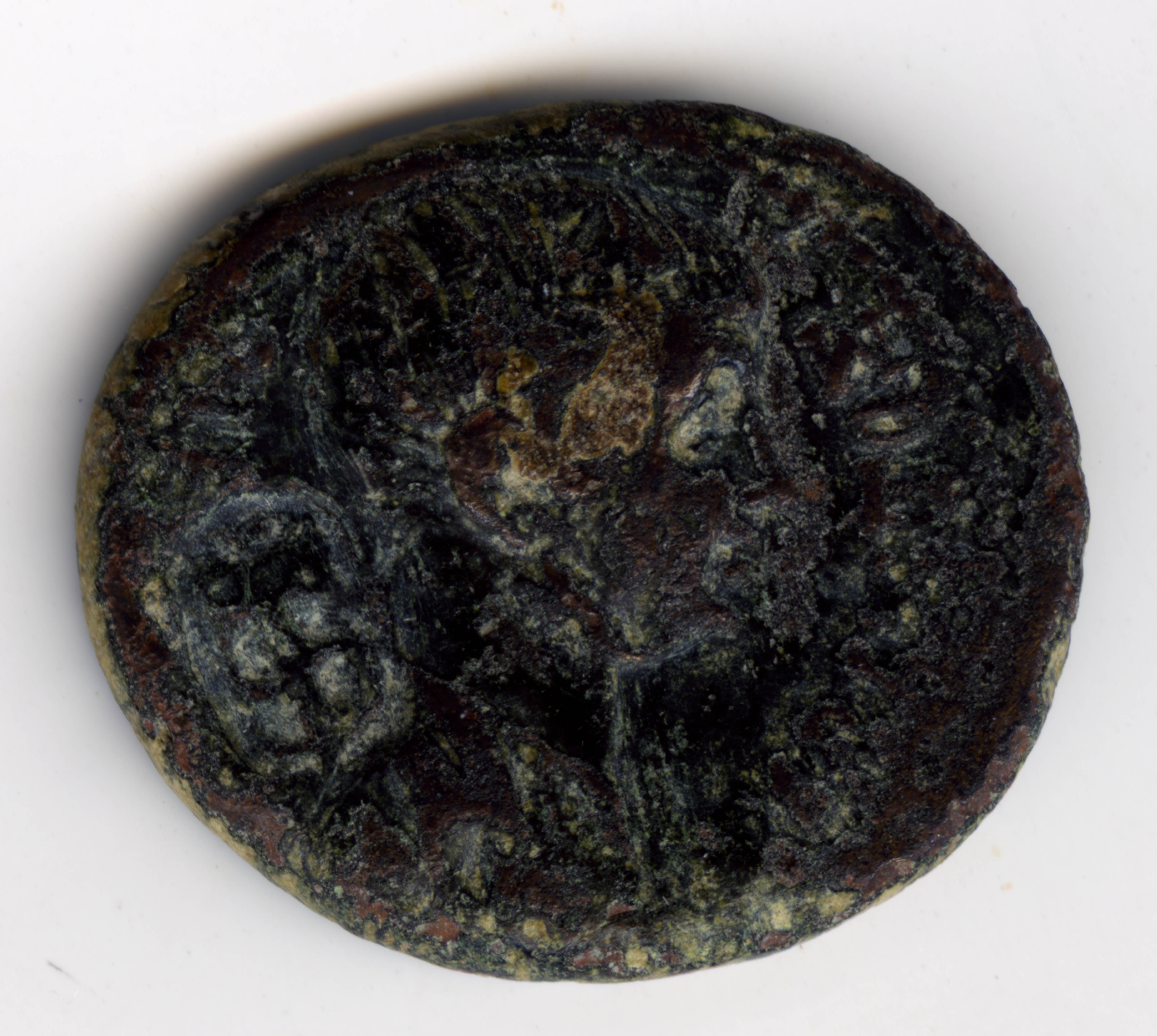
Bare head of Nero facing right, dating from 54 to 68 CE. Nero was the first Roman emperor to go through the process of damnatio memoriae. This is when the public images such as monuments of a condemned individual are destroyed and or mutilated (De Jong 2005, 680). Leaving modern viewers with a scarce amount of Nero imagery, the mass production of coins is the majority of information known about Nero’s portraiture. This bronze coin has deteriorated from age, but information can still be gathered from it. Nero chose to show his actual features, such as the rounded cheeks, curly hair, and double chin.
Chaos, Chaos, Coins!
Imperial coinage communicates an emperor's ideals to the largest audience possible. Coins controlled the Roman economy in agriculture, taxation, housing, and overall any exchanging for goods (Howgego 1995, 22). In times of political strife, an emperor being able to broadcast his ideologies to a wide-variety of citizens was important to his overall popularity. The system in which coinage was produced under the Roman Empire dictates whether or not this message can be sent to the people. Before the year of 69 CE a large coinage reform just took place, as prior to Nero the empire would stop coin production for years at a time with many mints going in and out of production (Metcalf 2012, 346). This reform changed the structure of the treasury's coin provinces, the production was moved into the imperial provinces and very few senatorial provinces (Metcalf 2012, 350). This put majority of coin production in the hands of the emperor, rather than those of different governors and public treasury branches. This structure under the control of one emperor would not be an issue. Four emperors overlapping each other in a short period of time on the other hand, made for an extremely disordered production of coinage. Only a few years later in the beginning of the Flavian Dynasty, would production become more centralized (Metcalf 2012, 378). The coinage left today gives modern viewers a look into the false perceptions, rushed production, and personal ideologies these four emperors broadcasted to the Roman public.
Galba Coin:
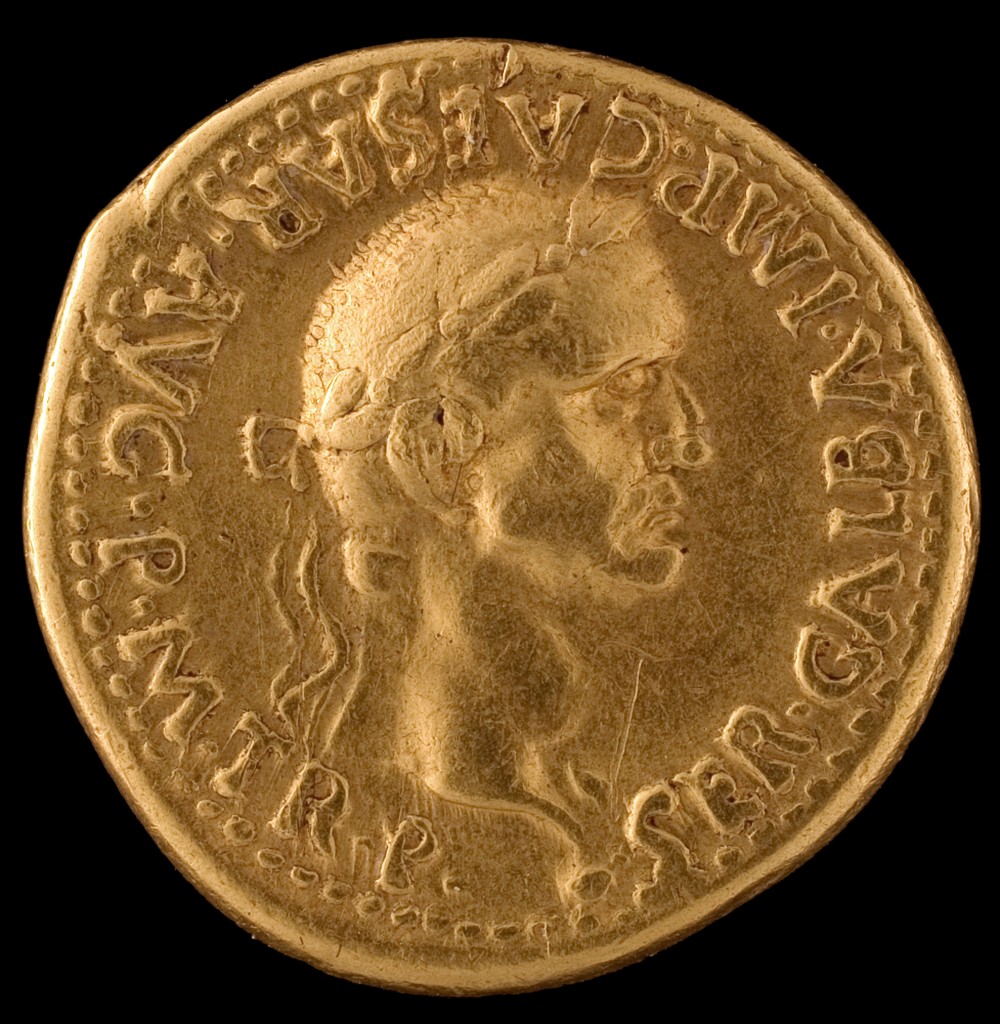
1. Obverse
Laureate head of Galba; "SER GALBA IMP CAESAR AVG P M TR P", from c. 68 CE. Galba was about sixty-nine years old when declared emperor (Morgan 2007, 32), a stark contrast to the young Nero. Galba shows his age through his sunken cheeks and wrinkles on the forehead. Possibly a tactical move to separate himself from the hated Nero, showing his age gave him wisdom Nero had yet to unlock. However, Galba’s portraiture still hides truths about his physical state. He elected to hide his baldness on his imperial portraiture (Morgan 2007, 34), seemingly trying to have a balance of aging features. Showing himself as too old would be a sign of weakness in emperorship.
2. Reverse
Livia holding patera in right hand and leaning on scepter in left hand; "DIVA AVGVSTA", from c. 68 CE. Livia was the wife of emperor Augustus and she set the stage for the role of imperial women under the Roman Empire. After her death she was deified by her grandson Claudius in 42 CE (Jacobson 2019, 83-84), as is most of the Julio-Claudian dynasty. The use of a Goddess is extremely common in Roman coinage, but Galba is sending a specific message by portraying Livia. Livia is often connected too Ceres (Jacobson 2019, 84), the Goddess of agriculture, yet Livia’s real power lies within her imperial influence. Galba is solidifying his imperial power by putting an image of the heavily respected Livia on his coinage.
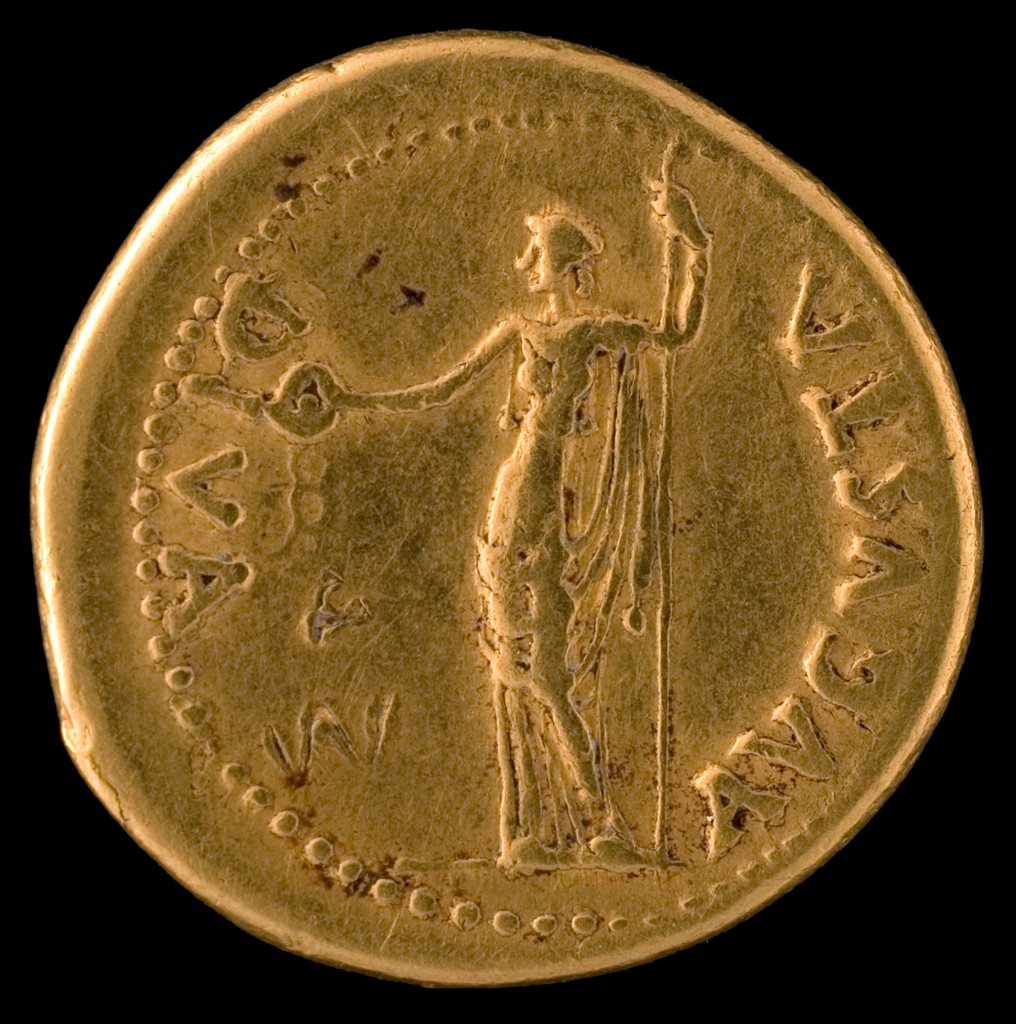
Perspective Of The Ancients
Second Century Historian Suetonius On Galba's Appearance:
“He was of average height, very bald, with blue eyes and a hooked nose. His hands and feet were so distorted by gout that he could not endure a shoe for long, unroll a book, or even hold one. The flesh on his right side too had grown out and hung down to such an extent, that it could with difficulty be held in place by a bandage.” (Suetonius, Thomson, 2008, 254)
Otho Coin:
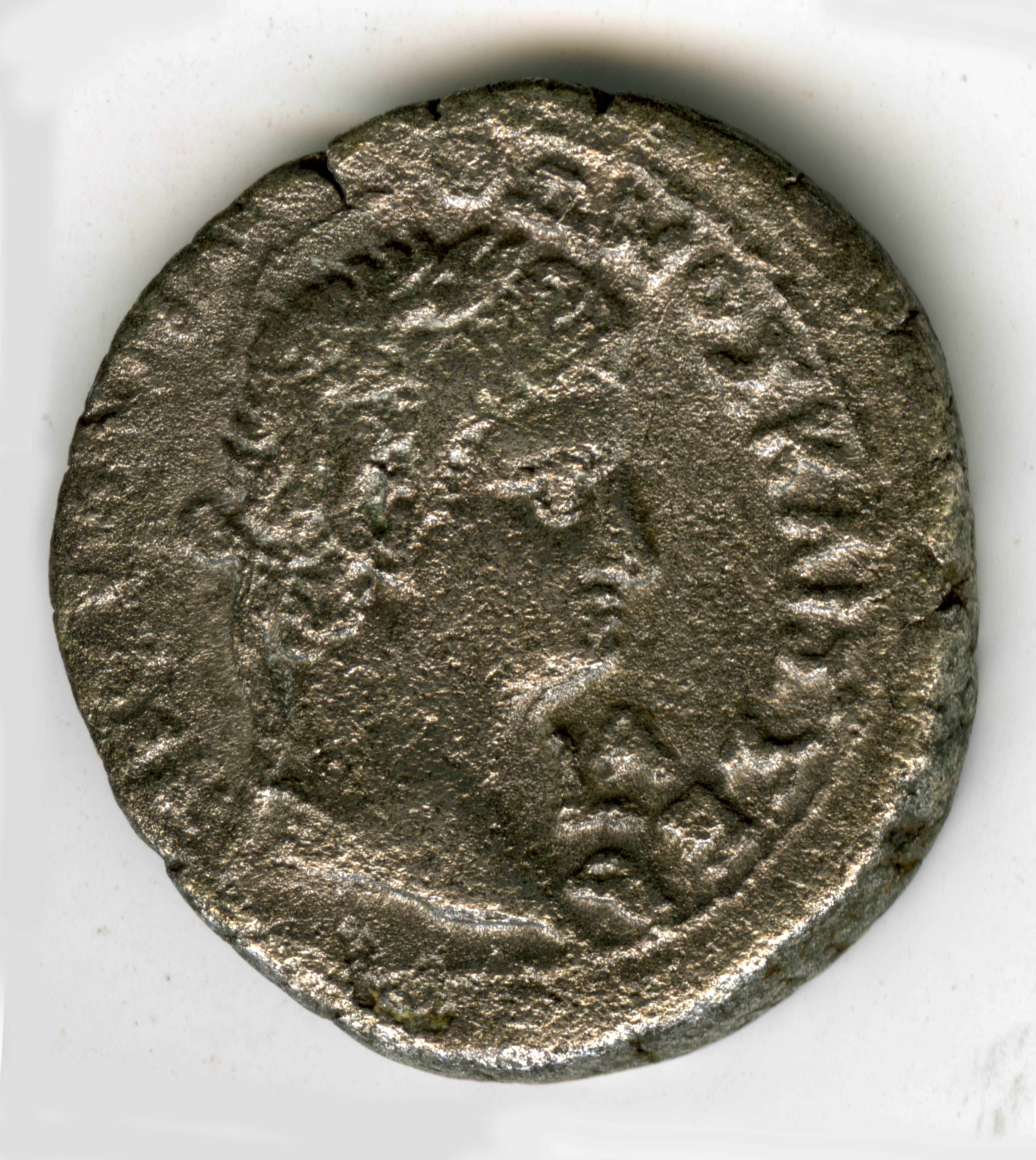
1. Obverse
Right facing head of Otho; "AVTOK MAPK OQWNOS KAIS SEB", from 69 CE. Otho produced a large amount of silver coinage during his three month emperorship (Burnett, Amandry, Ripollès, Carradice 1992, 712). This mass production in such a short period left many coins with issues. This coin is not centered and still depicts features of Galba, such as the hooked nose. This coin is a curious case because it also depicts Nero's signature curls. Nero was understandably loathed by the empire, however Otho still decided to honor the man by wearing a wig based on Nero's hair in real life and much of his coinage (Grant 1958, 37). An odd choice, as Otho’s connection to Nero was his former wife Poppaea, who Nero married and killed (Grant 1958, 37).
2. Reverse
Kratesis standing left holding Nike and trophy; "KRA-TH-SIS", from 69 CE. This coin was produced in Alexandria, Egypt, its location is largely related to the message being sent. The word Kratesis is a Greek word for "power", and is seen as a representation of military strength (Gribetz 2016, 65). A festival in the name of Kratesis took place in the eastern provinces whenever a new emperor was named (Gribetz 2016, 66). Before Otho, Galba depicted Kratesis on his coinage in Alexandria (Burnett, Amandry, Ripollès, Carradice 1992, 711). Both emperors depicted Kratesis to publicize themselves as emperor in the eastern provinces.
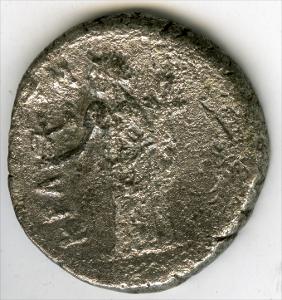
Historical Context
Coin Production In Alexandria:
Imperial silver production in Alexandria was chaotic before the year of 69 CE. After Egypt was conquered by Octavian, better known as emperor Augustus in 30 BC, production of silver coinage would not start up again until 20 AD (Burnett, Amandry, Ripollès, Carradice 1992, 688). Decades after during Nero's reign, silver coin production became more regular with only two year long breaks over his fourteen year emperorship (Burnett, Amandry, Ripollès, Carradice 1992, 688). Galba also produced a regular amount of silver coinage in Alexandria within his eight months as emperor. Otho only produced silver and gold because it was the single way to pay the military, unlike bronze coinage (Sutherland 1974, 174). The coin of Otho above portrays how the renewal of coin production in Alexandria was overwhelmed by abrupt changes in production. The mixture of features could be an indication that Nero coinage was still being changed to Galba or Galba coinage was being switched to Otho. Another theory is Otho's short reign left no time to figure out his individualized features (Burnett, Amandry, Ripollès, Carradice 1992, 712), as Egypt was on the far East of the empire.
Vitellius Coin:
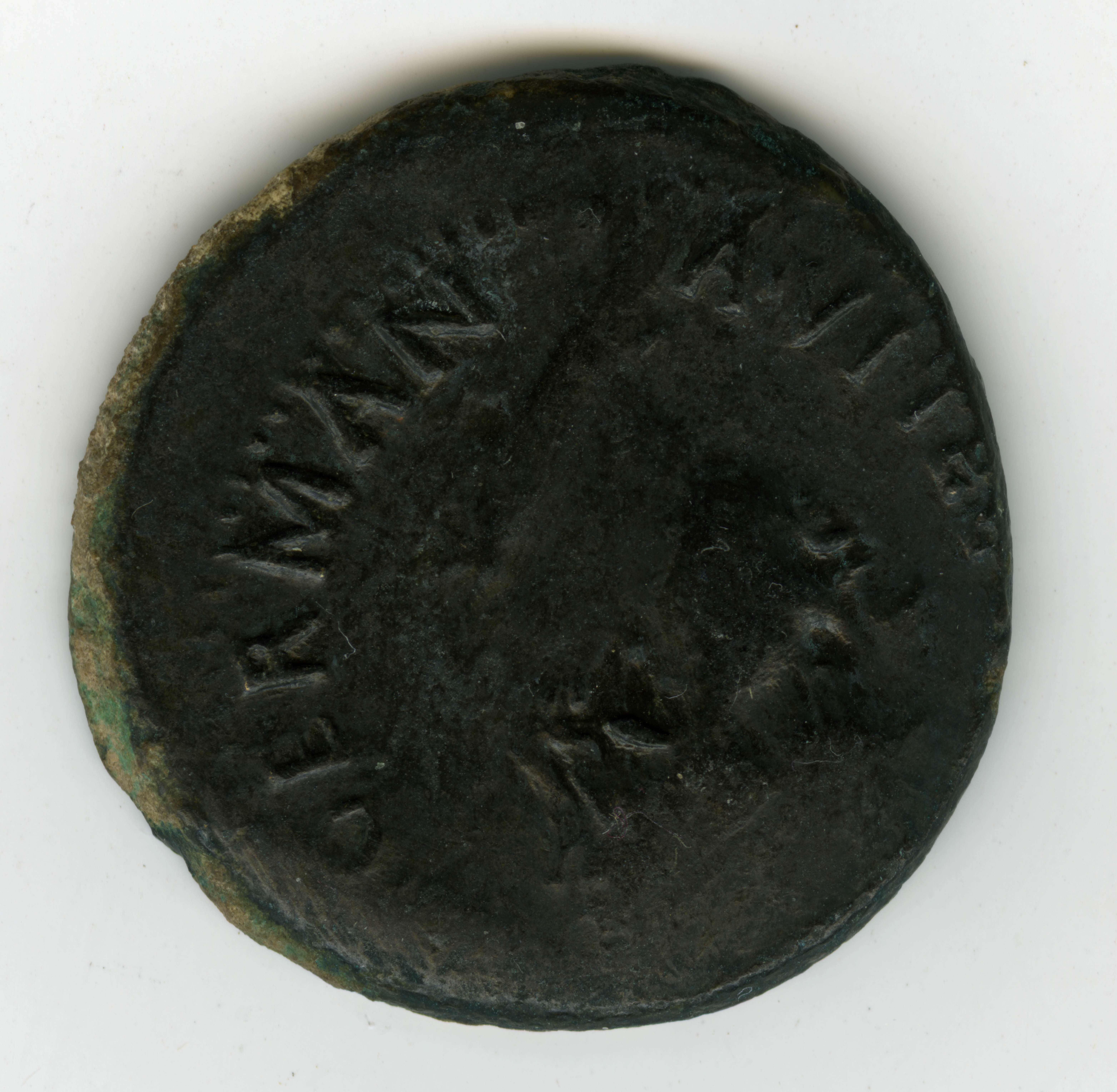
1. Obverse
Heavily worn dark coin with head facing left; "A VITELLIVS GERMAN", from 69 CE. This coin is not centered and some letters are cut off the top, indications of rushed production. No clear face can be seen in this image, but the inscription around the edges reads “Vitellius German”. Vitellius' portraiture mainly depicted verism, an art style of hyper-realistic imagery. A proportionately large head (Sutherland 1974, 175) with lines to indicate he weight on the heavier side was the model for his coinage portraiture.
2. Reverse
Libertas standing; "LIBERTAS RESTITVTA", from 69 CE. Libertas is seen as a symbol of liberty and freedom to Roman culture (Grant 1958, 15). On imperial roman coinage, Libertas usage is linked to taking over from a tyrant (Grant 1958, 15). In fact, all of the emperors from this civil war had Libertas on their coinage at some point. Libertas is a false perception of Vitellius's time as emperor, as he used his power for selfish reasons. He is said to have spent six million dollars worth of the peoples money on his own food and banquets in his short time ruling (Gibbon 2013, 79).
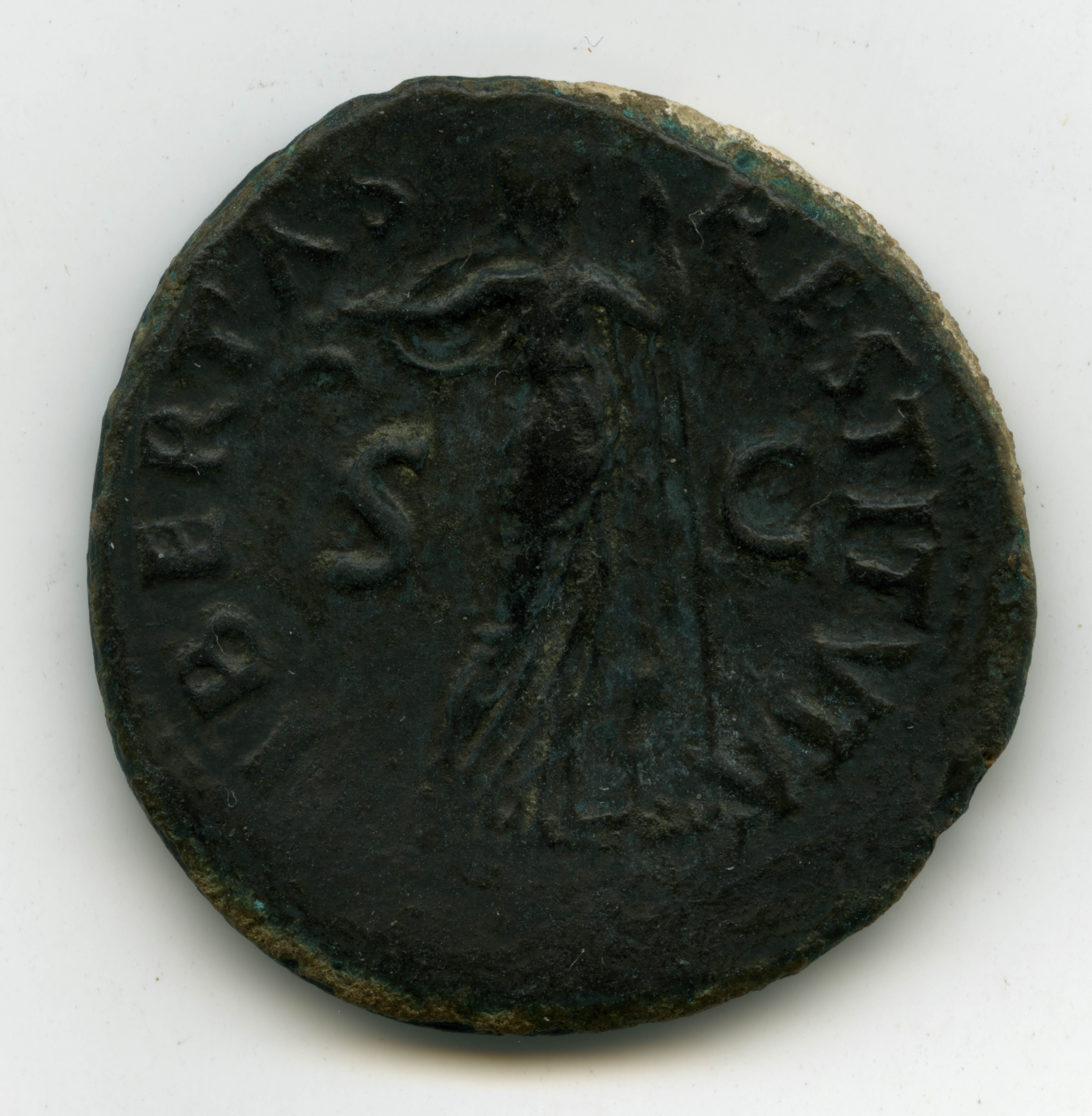
Perspective of the Ancients
Second Century Historian Suetonius On Vitellius’ Appearance:
“They also upbraided him with the defects of his person, for he was monstrously tall, and had a face very red with hard-drinking, a large belly, and one weak, occasioned by a chariot running against him, as he was attending upon Caius, while he was driving.”(Suetonius,Thomson, 2008, 268-269)
Vespasian Coinage:
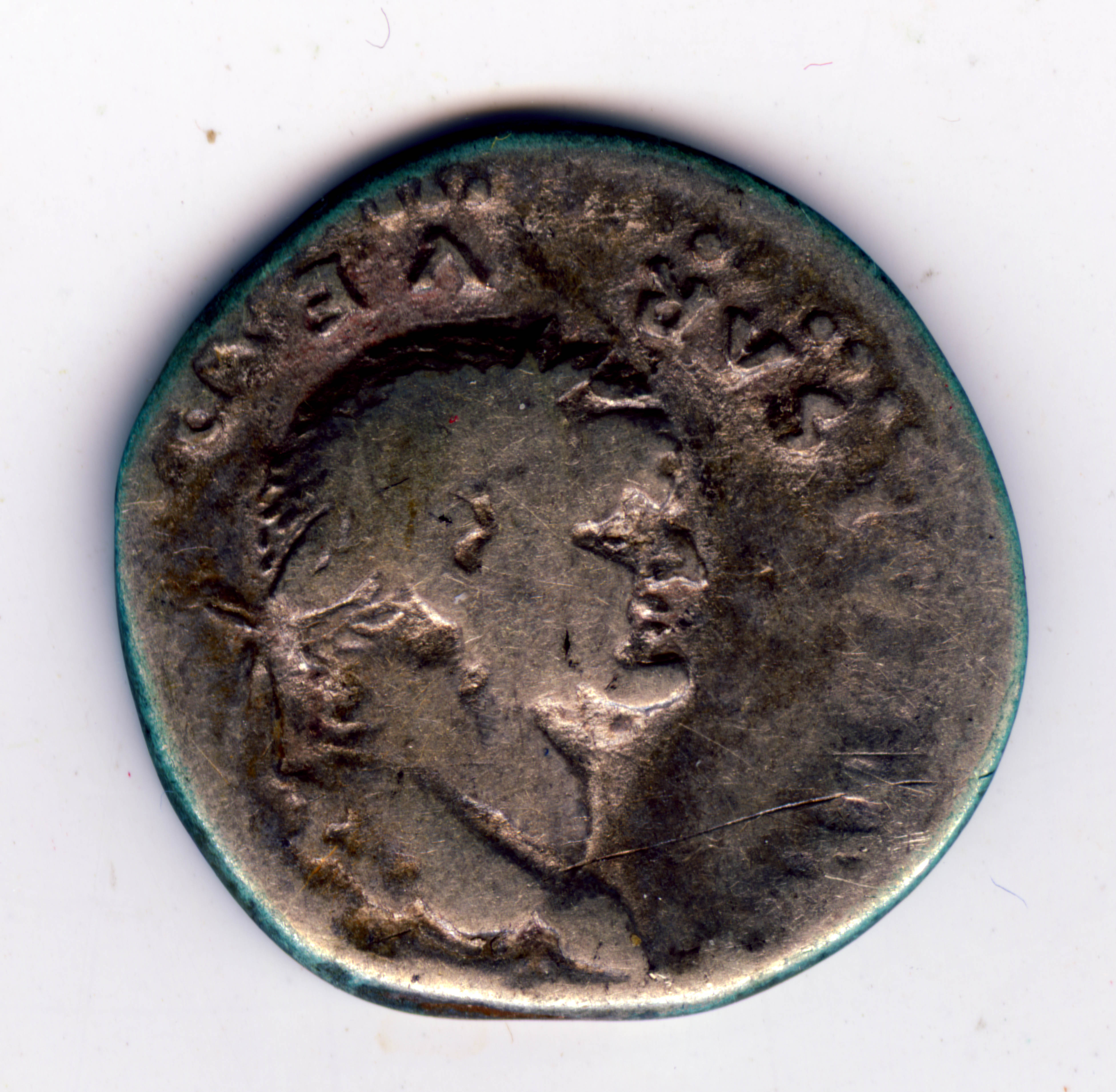
1. Obverse
Bust image of Vespasian facing right; "VESP" "AE SAR" "IMP", from 76 CE. Vespasian would have been about sixty-six years old when this coin was produced. His age is clearly shown through prominent crows feet, forehead wrinkles, and a sagging neck. Roman republican veristic style defined Vespasian portraiture (Tuck 2021, 200), most likely a tactical choice to draw focus on Vespasian's age-induced virtues. His years of experience as a military general is what gained him support to take the role as emperor, even many years after 69 CE he chose to reflect this.
2. Reverse
Muscular figure standing facing front, from 76 CE. Based on comparison to other coins from this period, this image is of Jupiter. This use of Jupiter on a silver denarius is not uncommon, but Vespasian could be using this imagery on silver to allude to the First Jewish Revolt he suppressed (Grant 1958, 52). After this revolt, Jewish people had to pay a silver piece to the God Jupiter as a form of tax, rather than paying the temple at Jerusalem (Grant 1958, 53). Jupiter is a symbol of protection of the Roman State. Whether or not on purpose, Vespasian is portraying his history of "protecting" the Roman state.
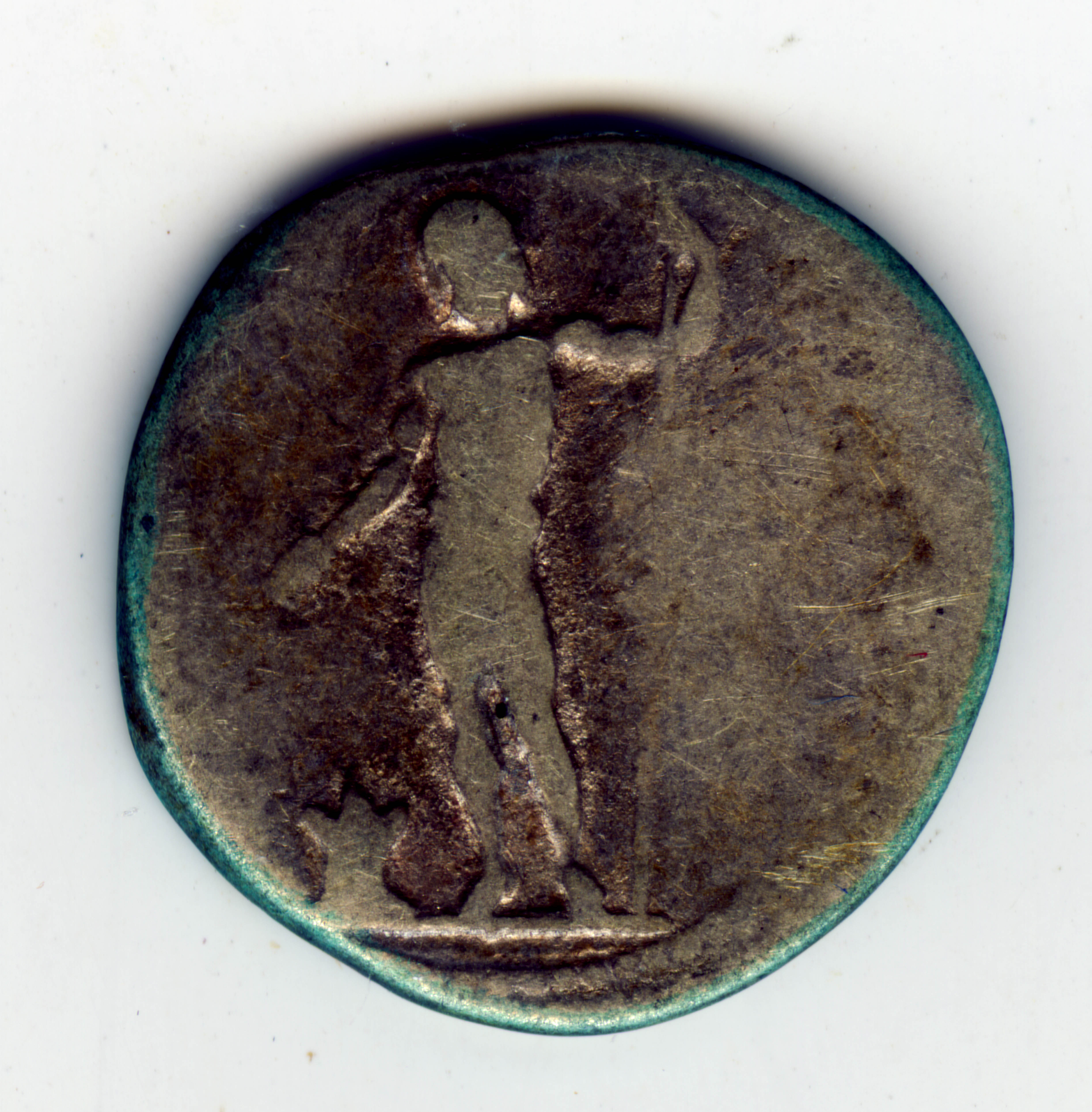
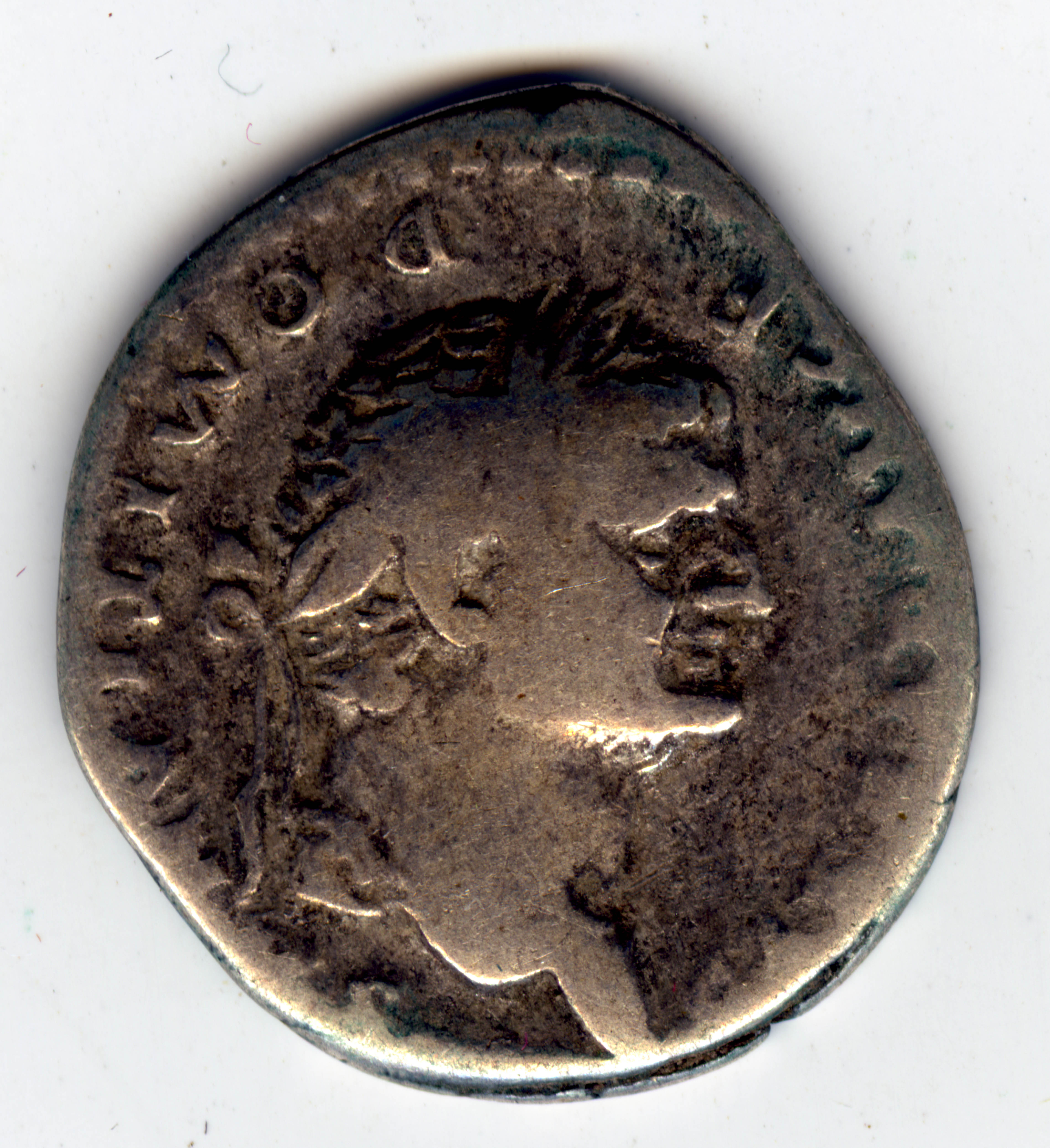
3. Obverse
Bust of Domitian as Caesar; ''CAESAR AVG F DOMITIANVS", from 76 to 77 CE. By portraying other members of the Flavian Dynasty while still emperor, Vespasian is broadcasting the lasting legacy his emperorship has brought. It is difficult to see the difference between Vespasian and Domitian other than features of old age on the image of Vespasian, showing the unity a dynasty brings. The image does not match reality unfortunately, as Domitian was the second emperor to go through damnatio memoriae, and his reign ended the Flavian Dynasty in 96 CE (Tuck 2021, 217).
4. Reverse
Pegasus facing right with one leg raised; "COS IIII", from 76 to 77 CE. The pegasus in greco-roman mythology stems from the myth of Perseus, a famous warrior who is known for decapitating the head of Medusa (Roskam 2021, 73). Born from this decapitation the pegasus enabled Perseus to save the maiden Andromeda. In Athenian culture, during the famous yearly Kronia festival, a contest took place to name the “next” Perseus (Roskam 2021, 74-75). Vespasian could be conveying that once he and Titus are gone, Domitian will be the next great warrior for the Roman Empire.
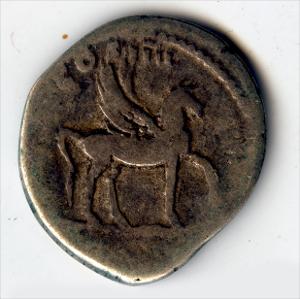
Historical Context
Coin Production in Rome Under Vespasian :
Two years after the year of the four emperors, in 71 CE, Rome became the dominant producer of silver imperial coinage (Metcalf 2012, 376). Most other provinces were mainly restricted to the production of bronze coinage. By way of the mint of Rome, Vespasian increased imperial silver use in the eastern parts of the empire. As the mint of Rome aimed to create coin designs for provincial specific messaging (Metcalf 2012, 377). Unsurprisingly, both silver coins under the Vespasian section were minted in Rome. It is possible both of these coins were meant to be transported to the eastern parts of the empire. The first coin as a reminder to the remaining Jewish population in the Jerusalem area and the second coin to appeal to the public in Greece.
Page Completed by Noah Friedman, Rhodes College '25